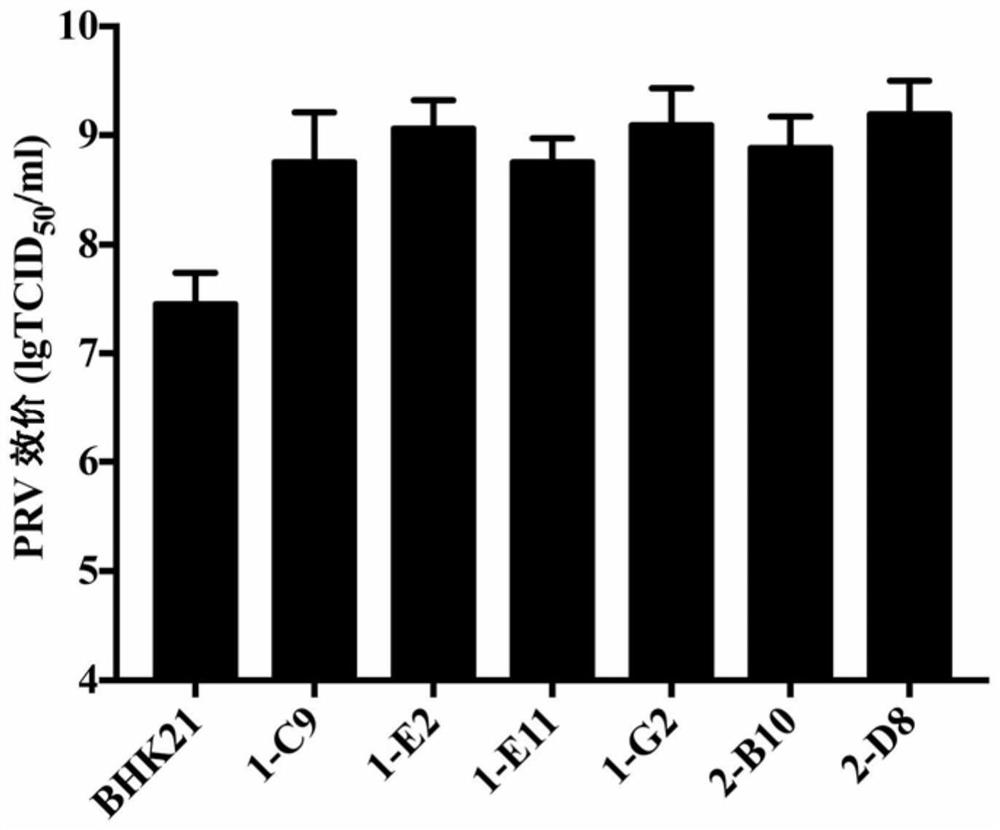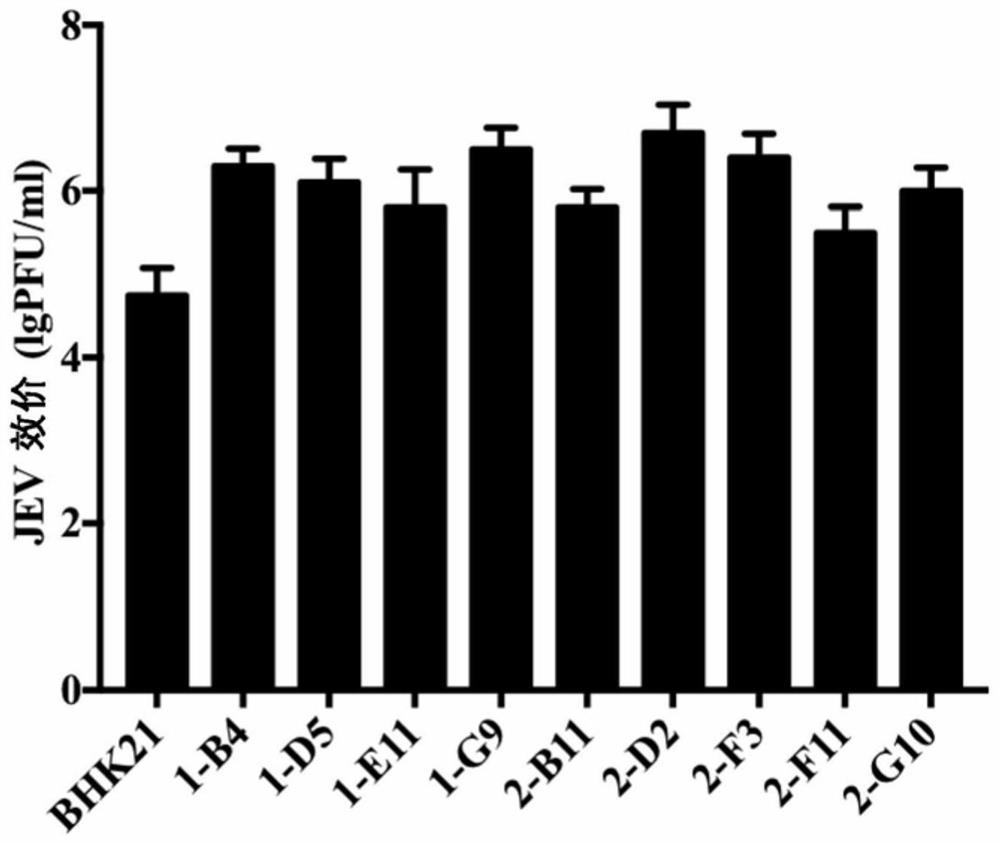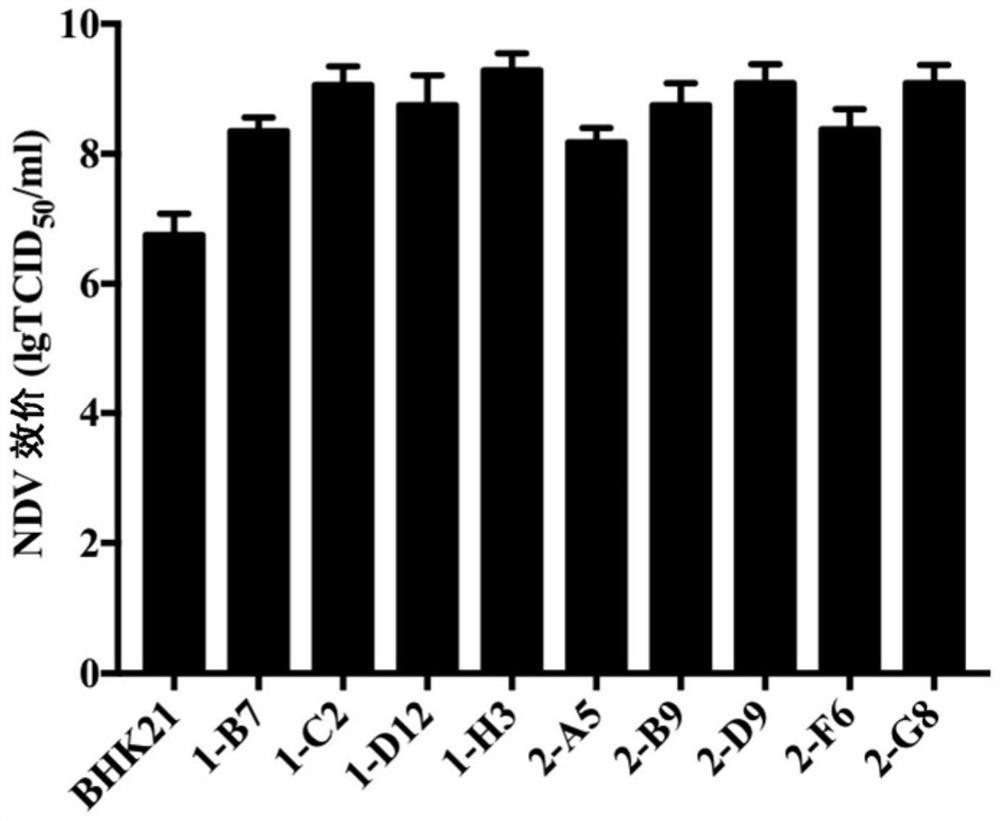The bhk21 cell population reconstituted by the innate immune system and the application of its cell clone to increase toxicity
An immune system, innate technology, applied in the field of biotechnology and veterinary biological product engineering, can solve the problems of undiscovered BHK21 cell population and its cell cloning application, and achieve the effect of improving the proliferation titer
- Summary
- Abstract
- Description
- Claims
- Application Information
AI Technical Summary
Problems solved by technology
Method used
Image
Examples
Embodiment 1
[0049] Example 1 Acquisition of BHK21-KO-IM cell population and formation of single cell clones
[0050] 1. Construction of pUC-gRNA-library
[0051] The genome sequence of the golden hamster was analyzed, and the respective gene sequences of receptor proteins, effector proteins, stress proteins, protein kinases, interferons and their downstream regulatory products of the innate immune system were identified, according to the CRISPR / Cas9 system. Sequence identification for gene editing requires selection of target sequences. Typically at least two target sequences are selected per gene sequence. For each target sequence, a pair of DNA oligo primers were designed. The primers used were primers with SEQ ID NOs: 1-446.
[0052] Each pair of target sequence primers is individually annealed to generate DNA duplexes with cohesive ends. The gRNA expression vector backbone (containing U6 promoter, RNA scaffold, and polyA signal sequence) was treated with restriction endonuclease B...
Embodiment 2
[0059] Example 2 Screening of BHK21 cell clones with high PRV production and application of virus proliferation
[0060] 1. The BHK21-KO-IM cell population was sorted by flow cytometry to form single cell clones in a 96-well plate. After recovery, 177 actual cell clones were obtained. The cell density in each well was adjusted to approximately the same, and the cells expanded. Duplicate plates were made for comparison of virus proliferation efficiency.
[0061] 2. Remove the culture supernatant and inoculate 200ul / well of virus proliferation maintenance solution containing the same amount of porcine pseudorabies virus (PRV) respectively. The cytopathic changes were observed every day, and the virus proliferation was completed in 72 hours. After three freeze-thaw cycles, the titer of the virus proliferation samples in each well was determined. Specifically, for each virus sample, 10 -6 , 10 -7 , 10 -8 After dilution, it was inoculated on ordinary monolayer BHK21 cells, and ...
Embodiment 3
[0063] Example 3 Screening of JEV high-yielding BHK21 cell clones and their application in virus proliferation
[0064] 1. The BHK21-KO-IM cell population was sorted by flow cytometry to form single cell clones in a 96-well plate. After recovery, 177 actual cell clones were obtained. The cell density in each well was adjusted to approximately the same, and the cells expanded. Duplicate plates were made for comparison of virus proliferation efficiency.
[0065] 2. Remove the culture supernatant and inoculate 200ul / well of virus proliferation maintenance solution containing the same amount of porcine Japanese encephalitis virus (JEV) respectively. The cytopathic changes were observed every day, and the virus proliferation was completed in 96 hours. After three freeze-thaw cycles, the titer of the virus proliferation samples in each well was determined. Virus titer detection method According to the quality standards of veterinary biological products of the Ministry of Agricultur...
PUM
 Login to View More
Login to View More Abstract
Description
Claims
Application Information
 Login to View More
Login to View More - R&D
- Intellectual Property
- Life Sciences
- Materials
- Tech Scout
- Unparalleled Data Quality
- Higher Quality Content
- 60% Fewer Hallucinations
Browse by: Latest US Patents, China's latest patents, Technical Efficacy Thesaurus, Application Domain, Technology Topic, Popular Technical Reports.
© 2025 PatSnap. All rights reserved.Legal|Privacy policy|Modern Slavery Act Transparency Statement|Sitemap|About US| Contact US: help@patsnap.com



